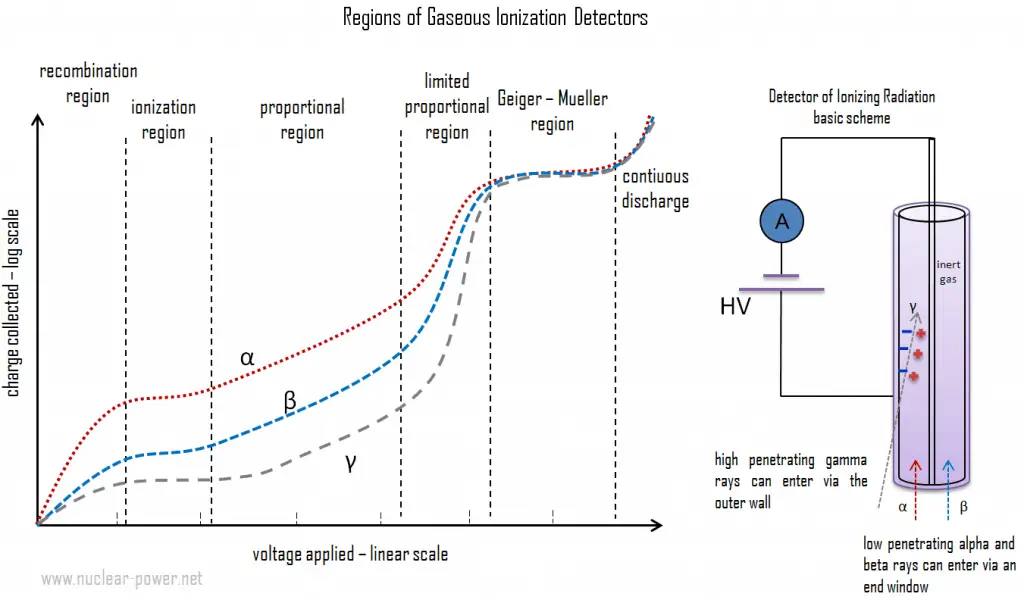The relationship between a detector’s applied voltage and pulse height is very complex. Pulse height and the number of ion pairs collected are directly related. As was written, voltages can vary widely depending upon the detector geometry, gas type, and pressure. The figure schematically indicates the different voltage regions for alpha, beta, and gamma rays. There are six main practical operating regions, where three (ionization, proportional, and Geiger-Mueller region) are useful for detecting ionizing radiation. These regions are shown below. The alpha curve is higher than the beta and gamma curve from the recombination region to part of the limited proportionality region due to the larger number of ion pairs produced by the initial reaction of the incident radiation.

Recombination Region
The electric field is not large enough at low voltage to accelerate electrons and ions. The electrons and ions can recombine soon after they are produced, and only a small fraction of the produced electrons and ions reach their respective electrodes. As the detector voltage increases, however, an increasingly large fraction of the ions produced will reach the electrodes. This increase continues until the “saturation” voltage is attained. The operating voltage range where this occurs is referred to as the recombination region. Detectors are not operated in this region because neither the number of recombinations nor the number of ion pairs initially produced can be determined accurately.